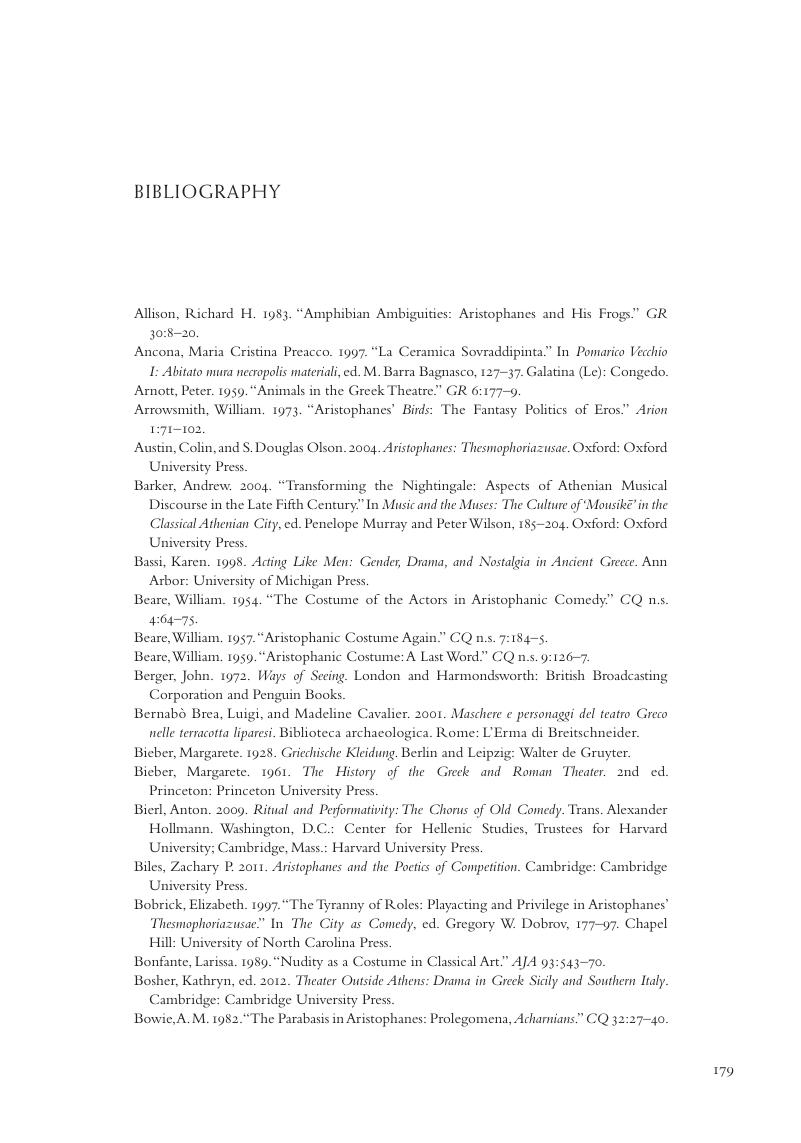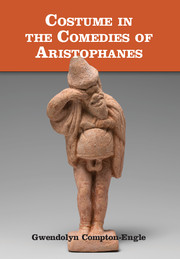Book contents
- Costume in the Comedies of Aristophanes
- Costume in the Comedies of Aristophanes
- Copyright page
- Dedication
- Contents
- Figures and table
- Glossary
- Book part
- One Introduction: Comic Costume in Action
- Two The Comic Body as Costume
- Three Cloaks, Shoes, and Societal Redress
- Four Disguise, Gender, and the Poet
- Five Animal Costumes and Choral Spectacle
- Six Conclusion
- Notes
- Bibliography
- Index
- References
Bibliography
Published online by Cambridge University Press: 05 May 2015
- Costume in the Comedies of Aristophanes
- Costume in the Comedies of Aristophanes
- Copyright page
- Dedication
- Contents
- Figures and table
- Glossary
- Book part
- One Introduction: Comic Costume in Action
- Two The Comic Body as Costume
- Three Cloaks, Shoes, and Societal Redress
- Four Disguise, Gender, and the Poet
- Five Animal Costumes and Choral Spectacle
- Six Conclusion
- Notes
- Bibliography
- Index
- References
Summary

- Type
- Chapter
- Information
- Costume in the Comedies of Aristophanes , pp. 179 - 192Publisher: Cambridge University PressPrint publication year: 2015



